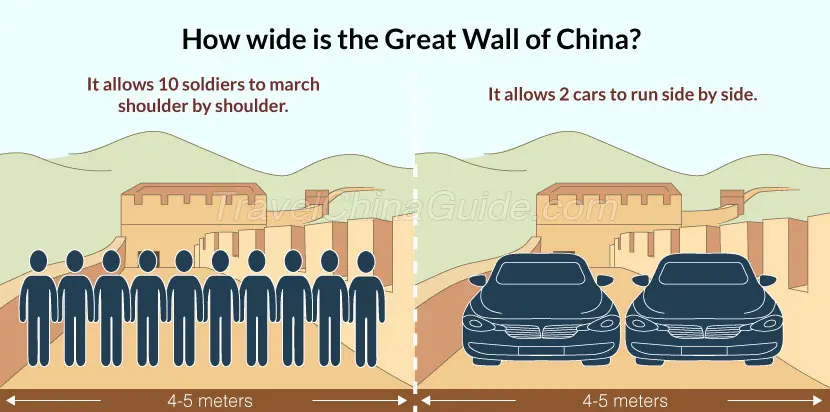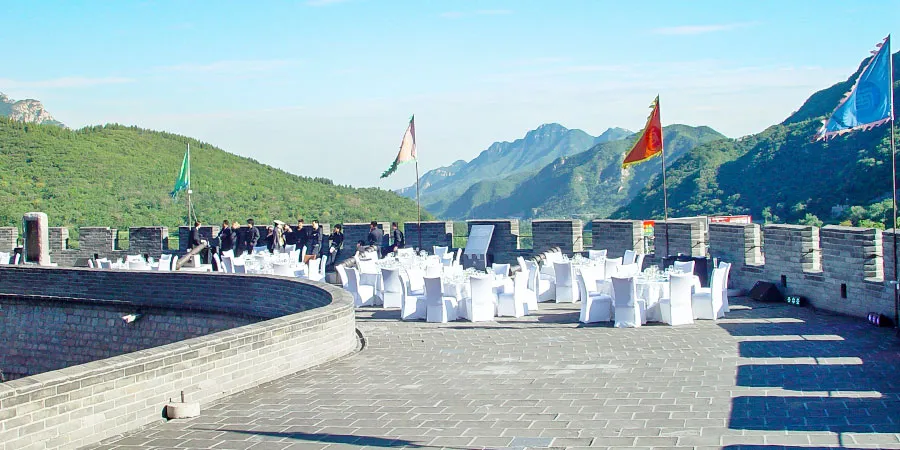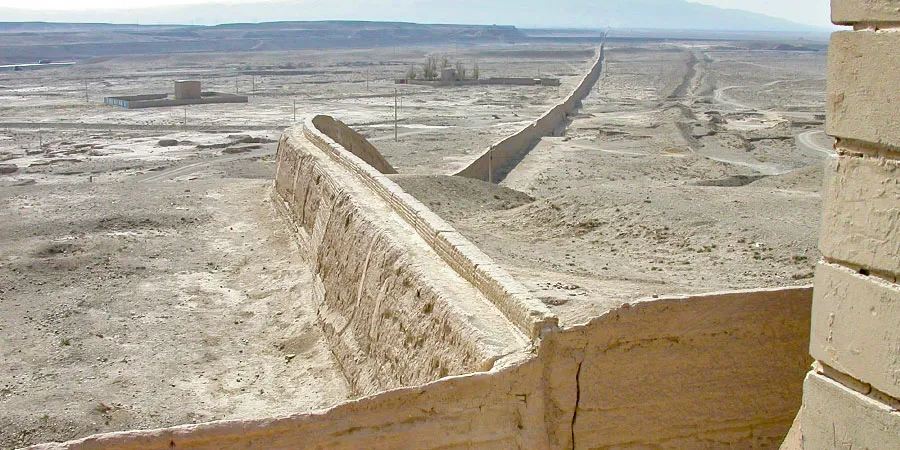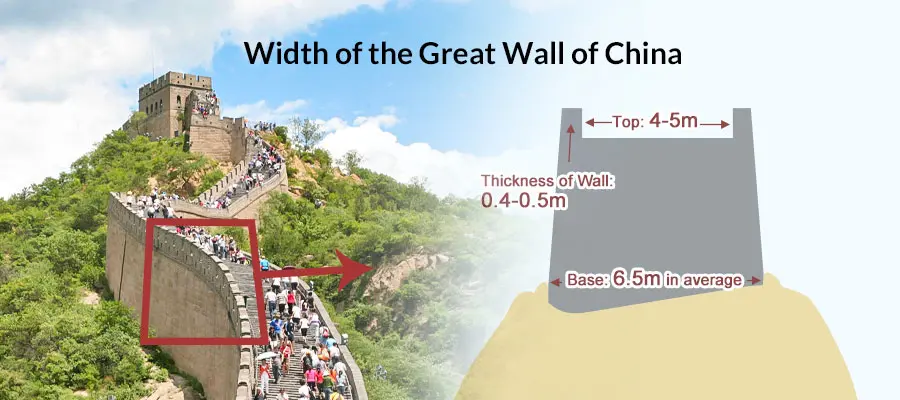How wide is the Great Wall of China?
Average Width: 4 - 5 meters (13 - 16 feet)
Due to the different landforms and military geographical locations, the width of the Great Wall varies. Generally speaking, the width may reach 4 to 5 meters (13 to 16 feet) at the top, which allows at least four horses to pass through at the same time. For reference, a standard single-lane motorway typically measures 3.5 meters (11.5 feet) in width, suggesting that, hypothetically, the Great Wall could accommodate two cars abreast. This design is beneficial for the soldiers to convey the provisions and weapons when they have battles. The average width of the base is about 6.5 meters (21 feet). The design of wider base makes the wall more solid. The wall itself on the top usually measures 0.4 - 0.5 meters (1.3 - 1.6 feet) thick.
 |
The Great Wall’s width differs in different sections.
The width of the Great Wall of China varies across its diverse sections. In the plains or important military locations, the walls were built to be tall and solid; on steep mountain ridges, the walls were relatively low and narrow. Shanhaiguan, Jinshanling, Badaling, Mutianyu, and some other Great Wall sections in Hebei and Beijing were built in a relatively uniform manner, with an average height of about 10 meters (33 feet), a width of 7 - 8 meters (23 - 26 feet) at the bottom and a width of 4 - 5 meters (13 - 16 feet) at the top. The brick used to construct the wall is 0.4 meters (1.3 feet) long, 0.2 meters (0.7 feet) wide, and 0.1 meters (0.3 feet) thick and weighs about 15 kilograms each.
The widest part of the Great Wall: 16.7 m (54.8 ft.)
The Juyongguan section of the Great Wall in Beijing claims the title of the widest part. With an average width of 8 - 10 meters (26 - 33 feet), it reaches a remarkable 16.7 meters (54.8 feet) at its broadest point. Notably, its narrowest point measures a mere 1.2 meters (3.9 feet), making it the section with the most significant width variation.
 |
| The widest Great Wall |
The narrowest part of the Great Wall: 70 cm (28 in)
The Northern Qi (550 - 565) Great Wall in Zunhua City, Hebei Province, holds the distinction of being the narrowest segment. A mere 70 centimeters (28 inches) wide and 50 centimeters (20 inches) high, this section was constructed primarily from stones. The steep terrain of Jiufeng Mountain, where this part of the Great Wall is situated, provided natural defensive advantages but limited access to building materials. As a result, it was built to be both narrow and short, only serving as a marching road.
 |
| The narrowest Great Wall |
Calculation Method for Great Wall Width
The width of the Great Wall is determined by the ratio of its width to height. For example, when the wall stands 4 meters (13.1 feet) high, the base width is typically 5 meters (16.4 feet). For every 1-meter (3.3-foot) increase or decrease in height, the base width adjusts by 1 meter (3.3 feet), and the top width by 0.5 meters (1.6 feet).
The Great Wall is wider at the base and narrower on the top.
No matter what kind of material was used for constructing the wall, the longitudinal section was a trapezoid with a wide base and narrow top. This was formed by the upward contraction of both sides of the walls to enhance the stability. The ratio of upward contraction was different based on different building materials and terrains. In the history of Great Wall construction, there also seemed to be no regulations on the contraction ratio. In general, if the wall was 6 or 7 meters (20 or 23 feet) wide at the bottom, the top was 2 meters (7 feet) narrower, and the angle between the wall and the ground was about 80 degrees.
 |
| How wide is the Great Wall of China? |
How wide is the Great Wall of China at Badaling?
Base: 6.5 - 7.5 meters (21 - 25 feet)
How wide is the Great Wall of China at Mutianyu?
Base: 6 - 7 meters (20 - 23 feet)
More to read:
- Fun Facts about Great Wall
- Great Wall of China Facts for Kids
- Great Wall of China FAQs
- How long is the Great Wall of China?
- How old is the Great Wall of China?
- How tall is the Great Wall of China?
- When was the Great Wall of China built?
- Where is the Great Wall of China located?
- Who built the Great Wall of China?
- Why was the Great Wall of China built?



